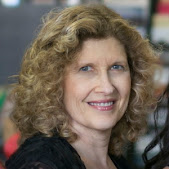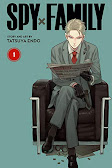An Interview with Managing Editor Susan Szesci and Acquisitions Editor Michael Green from Marble Press - A Guest Post by Nanette McGuinness
Susan Szecsi* (say-chee) is the managing director of Marble Press, and an award-winning illustrator, author and designer with a client list from publishers and startups to big corporations. Susan has an MA in English Literature and she received her classical art training at two prestigious studios in Hungary, the country of her birth. She believes that art and books are for every child, and that good books can change lives. Susan has two sons, and she loves to take long hikes with her husband in the beautiful San Francisco Bay Area, in California where she lives.
 Michael Green
Michael Green is the former publisher of Philomel, where he edited 30 New York Times bestselling titles, including several that went all the way to #1. He is most closely associated with
The Day the Crayons Quit by Drew Daywalt and Oliver Jeffers,
The Ranger’s Apprentice series by John Flanagan, the
Otis series of picture books by Loren Long, the Alex Rider novels by Anthony Horowitz, the sports-themed novels of Mike Lupica, and the historical fiction novels of Ruta Sepetys. Most recently he founded GreenHouse Editorial, a freelance editing service. He lives in New Jersey.
Nanette McGuinness: Marble Press is a brand new publishing company with three imprints: how wonderful! Could you talk about why you founded Marble Press? What are your goals for the company and its three imprints? What excites you about what you're doing now?
Susan Szesci: Marble Press was born from a desire to share the world’s best children’s books with young readers. We love children. We have kids of our own! Our mission is to publish books that will inspire children, challenge their imagination, and ignite their curiosity. In today’s complex world, quality books–and the words and images found in them–are more valuable than ever. We intend to publish books that make a difference, that stand out with regard to style and substance, and that offer a wide range of learning and experiences. We want books that are honest and diverse–that offer new perspectives and outside-the-box experiences. Great books can make you cry or scream with joy; they can make you ponder or dance or sing.
Michael Green: Building a list from scratch is fun in a way that makes me remember why I originally fell in love with publishing. I’m grateful for the reminder, excited for the challenge, and eager to let our books do the speaking.
NM: What do you anticipate as your publishing schedule and how many books do you foresee being on your lists?
SS: Our ten debut books will come out in fall 2023. The following year, we plan to launch another twenty titles. As the quality of the books is extremely important for us, we are highly selective about what we take in.
MG: One of the great freedoms of building a list anew is allowing the quality of the books to dictate the quantity. We’re not acquiring for the sake of acquiring; we’re acquiring for the passion and potential that comes with each project.
NM: Susan, you're an illustrator and designer; Michael, you’re an editor and a publisher. Could you tell readers about your respective journeys in children's literature?
SS: As a teacher and fine artist, I started to focus on illustrating children’s books over a decade ago. Initially, my attitude was, “How hard it can it be?” Soon I learned it was very hard: illustrations are about visual storytelling; fine art is not. My previous studies of anatomy, composition, color theory, and the experience of creating art with various media from watercolor to acrylic and oil came in handy. I picked up the missing pieces via online classes at SVSLearn and Schoolism. It didn't take long before I felt comfortable creating art for stories, and clients started to come. Next I joined the SCBWI and enthusiastically participated in the events. I even served as the illustrator meeting coordinator for the San Francisco North and East Bay chapter for a few years. Thanks to the SCBWI, I met both my critique group members and my agent, Allison Hellegers, with Stimola Literary. My passion for publishing grew as I learned more about how critiques and several edits can turn a rough manuscript into a magical story that is ready to be read and loved by wider audiences.
A good friend and fellow creative, Jon Collins-Black and I decided to create our own publishing company. After securing the financing from investors, we launched Marble Press in March 2022. Jon has decades of experience running several businesses, and we have the support of a Palo Alto law firm, Haynes and Boon’s IP lawyers, when we need. We were determined to find the best children’s book editor to make our team complete. We interviewed several wonderful people, but when we met Michael, there was no longer a question who would be the heart of Marble Press.
MG: I was the single luckiest soul in publishing – having been mentored by two of the greatest minds and hearts of the industry: Patricia Lee Gauch and Paula Wiseman, both of whom had a significant hand in guiding Philomel in its early days. These brilliant women taught me so much about editing, writing, following one’s vision, enabling writers to do what they do best, and doing it all in support of the finished product. I rode on their shoulders until I was ready to take over Philomel – and even then I had so much to learn.
I would go on to spend twenty-seven years with Philomel, the final fifteen as publisher, and while I would earn a reputation for fostering bestsellers, I succeeded only because I had the freedom to experiment and fail.
Twenty-seven years at one imprint is a long time, though, and when the moment felt right to move on, I did so. I stayed away from the industry just long enough to realize what I missed about it – and that is when Susan and Jon came calling. They are good eggs – passionate about books, smart about business, and faithful to their visions. They were searching for an editor to help bring those visions to life. The fit felt right.
NM: If you could only pick one picture book, MG novel, YA novel, GN novel, and book in translation, not that the last is mutually exclusive from the rest, what would you each pick and why?
SS: I grew up in Hungary, and my first favorites were Greek myths and collections of Asian and African folktales. Later, I was in love with Mark Twain and Jules Verne’s adventure novels. As a teenager, I read everything I could put my hands on, from scifi to Elliot Aronson’s The Social Animal to Bulgakov’s, The Master and Margarita. I know that’s more than one book, but my point is that translated works played a giant role in my life to make me the person I am today.
MG: I attempted to answer this question and found myself stumbling over and over again. I have worked with so many amazing writers and illustrators over the years that to choose the work of one over the others just felt impossible. I do have my favorites and I hope their creators know who they are.
NM: Marble Press is open to submissions from authors and illustrators; are you also open to translator pitches and publishing books in translation? What about graphic novels? If you're open to GN submissions (in translation or otherwise), do you prefer to match the illustrator and author, as is traditionally done by children's publishers or do you prefer that they come either as a team or in one person, as is more traditional for graphic novels?
SS: Yes, we are open to getting pitches from translators. While there is a noticeable difference between preferences in the European and Asian children’s book markets compared to the US, we believe that there are universal values and that books can be successfully adapted. In fact, among our debut books there is a charming Italian middle grade graphic novel, Electra, written by Brian Freschi illustrated by Elena Triolo.
MG: When it comes to graphic novels, I admit to a slight preference for working with author-illustrators rather than with separate creators. Susan and I are both great admirers of graphic novels and I have a feeling our list will reflect that.
NM: Anything else you'd like to tell readers?
MG: Take risks. People remember stories because they surprise and challenge us. Find what is unique about your own vision and pursue it.
NM: Thank you both for joining us! To all those reading this interview, please (please!) only pitch your very best work that you think will be a good fit for Marble Press after carefully considering what is on their website--whether you send a translation or an original work in English.
*Artwork from Marble Press website by Susan Szecsi, used with permission.
 Award-winning opera singer Nanette McGuinness is the translator of over 80 books and graphic novels for children and adults from French, Italian, German and Spanish into English, including the much loved Geronimo Stilton Graphic Novels. Two of her translations, Luisa: Now and Then and California Dreamin’: Cass Elliot Before the Mamas & the Papas were chosen for YALSA’s Great Graphic Novels for Teens; Luisa: Now and Then was also a 2019 Stonewall Honor Book. Recent translations include Makhno: Ukrainian Freedom Fighter); Rosa Parks; Magical History Tour: Vikings, Tiitanic, Gandhi, and The Plague, Bibi & Miyu #2, LGBTQ YA manga Alter Ego and Sirius, and the critically acclaimed A House Without Windows.
Award-winning opera singer Nanette McGuinness is the translator of over 80 books and graphic novels for children and adults from French, Italian, German and Spanish into English, including the much loved Geronimo Stilton Graphic Novels. Two of her translations, Luisa: Now and Then and California Dreamin’: Cass Elliot Before the Mamas & the Papas were chosen for YALSA’s Great Graphic Novels for Teens; Luisa: Now and Then was also a 2019 Stonewall Honor Book. Recent translations include Makhno: Ukrainian Freedom Fighter); Rosa Parks; Magical History Tour: Vikings, Tiitanic, Gandhi, and The Plague, Bibi & Miyu #2, LGBTQ YA manga Alter Ego and Sirius, and the critically acclaimed A House Without Windows.















